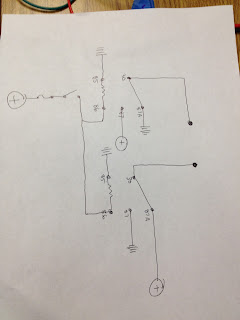 |
| Right after we got the valve cover off. |
 |
| Wrestling fuel lines. Each injector had it's own separate high pressure pump. |
 |
| Block with head, oil pan, oil pump, turbo, and exhaust manifold removed. |
The last couple of weeks have been really exciting for me. I dove headfirst into engines with a couple of the other guys. Interestingly enough, we chose the MBE 900 out of the storage garage. I tried my best to follow the service manual as we dis-assembled the engine. I made a point of looking at each component and piece we took out to look for wear or even figure out how something worked, so it took us a couple of days for tear down.
Once we got it taken apart, parts organized, and cleaned parts and surfaces I started taking a bunch of different measurements. Those included a ton of stuff that I've always wanted to know how to do properly. I learned to use the dial-bore gauge efficiently, as well as a lot of measurements using the micrometers. Some of the measuring tools we used required a bit of figuring out how to use them as we went; so it was both fun and challenging to figure out different ways to skin a cat.
A bit of fun on the side: changed out my wheel bearings on my Ranger last week as well. It was a good thing to revisit what I had learned from spring quarter.
 |
| Quite the difference in torque to yield bolts. Before and after. |
 |
| Top of head. Note the 3 valves. 2 intake and 1 exhaust. |
 |
| Looking at the bottom side of the engine at the crankshaft. Very cool, |
 |
| GOTTA keep those bolts and parts clean and organized! |
A bit of fun on the side: changed out my wheel bearings on my Ranger last week as well. It was a good thing to revisit what I had learned from spring quarter.
Total for Engine Weeks: 62
Total for Fall 2012: 119


